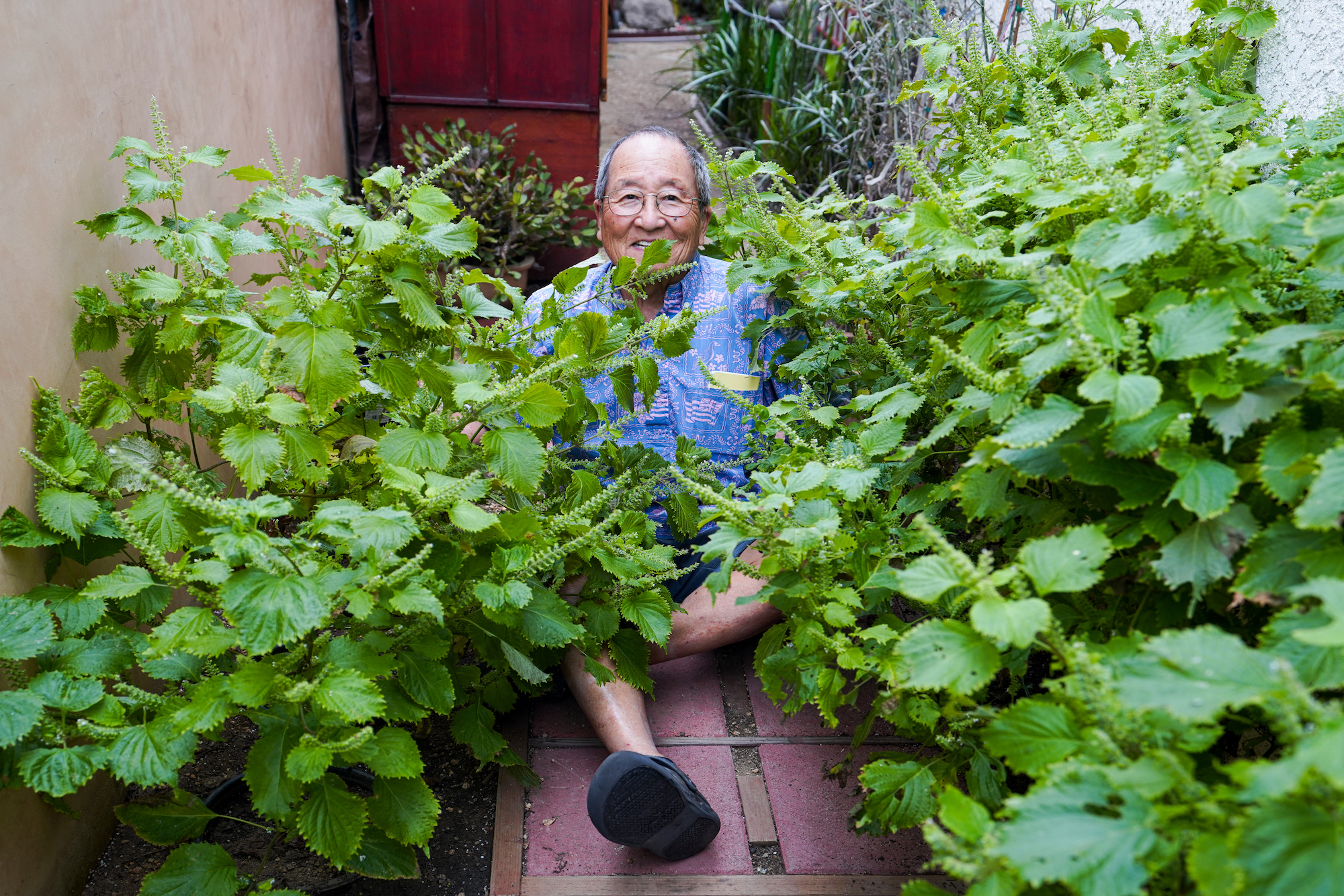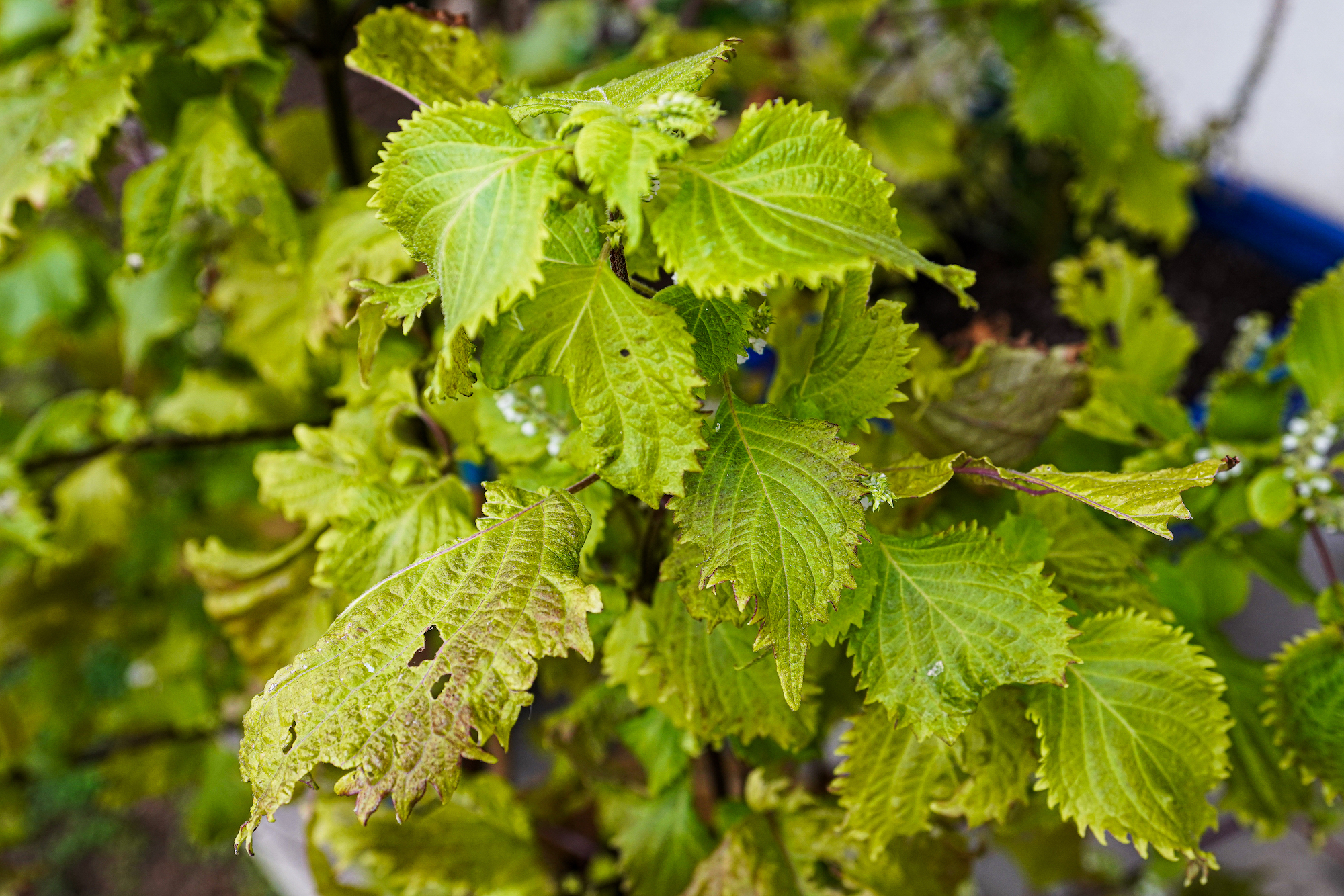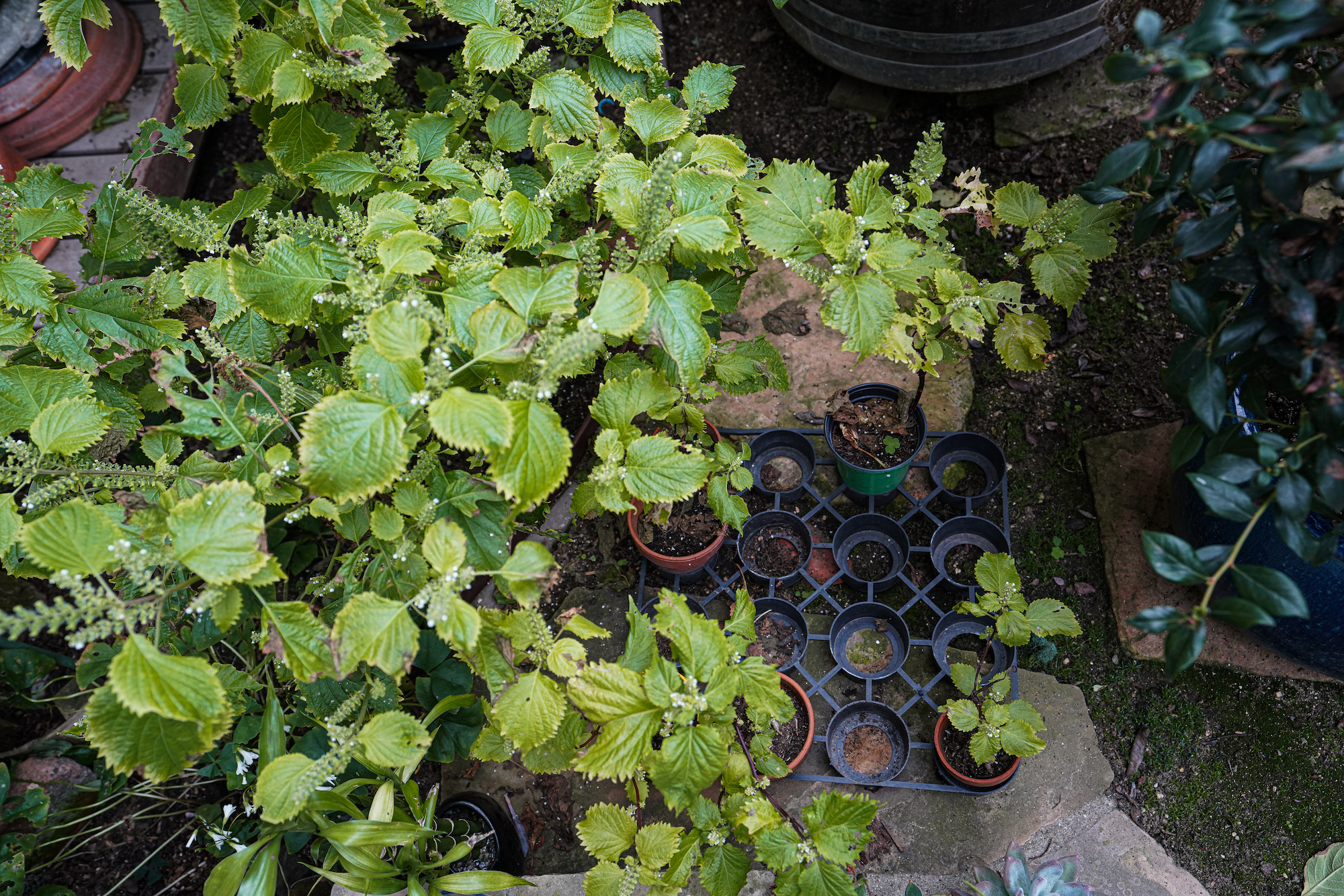From garden to table: Uniting California’s diverse communities through spice
How spice plays a crucial role in preserving the heritage of past and present.
By Shei Marcelline
A spice blend unlike any other seasons the city of Los Angeles.
A dash of culture and a pinch of flavor from every pocket of the world takes a seat at the table full of Angelenos, all sharing in two things—a meal and cultural pride.
Food surpasses mundanity to Angelenos. Instead, it serves as a bridge between cultural minorities and the generations that came before them. One in three Angelenos are immigrants—a statistic that is visibly sprinkled across LA neighborhoods, taking the form of ethnic marts and mom-and-pop restaurants.
LA’s Koreatown, which spans only two square miles, is home to the highest concentration of Koreans in the United States, along with the city's most famous Korean BBQ. Drive only 10 minutes west of K-town (on a good day), and Ethiopian restaurants line Fairfax Avenue. For a late-night snack, Leo’s Tacos Truck draws a crowd at the Sinclair gas station on La Brea Avenue, offering genuinely spicy salsa. If you want to get really niche, Pijja Palace in Silverlake takes the form of an Indian sports bar, where South Asian aunties and sports bros enjoy masala side-by-side.
While the options for dining at multicultural restaurants appear endless, long-time Manhattan Beach resident, David Okada will tell you, “nothing reminds me of my childhood more than a home-cooked meal.”
The variety of herbs and spices used in cultural households extend far beyond the aisles of LA’s mainstream grocery stores, where ethnic spices are not regularly sold. This is surprising since the U.S. is the world's largest importer and consumer of spice, according to the U.S. Department of Agriculture. One workaround is ethnic markets. However, La Cañada Flintridge resident Padmini Joseph says, "They lack the same aroma and flavor and they're usually stale.”
So what’s the solution?
‘A place where things kept growing’
David Tadami Okada loses his hearing aid at least twice a week in the soil of his home garden in Manhattan Beach.
At a sharp 81-years-old, Okada spends hours at a time tending to each plant in his garden, reciting each one’s growing conditions on par with the “Encyclopedia on Tropical Plants.”
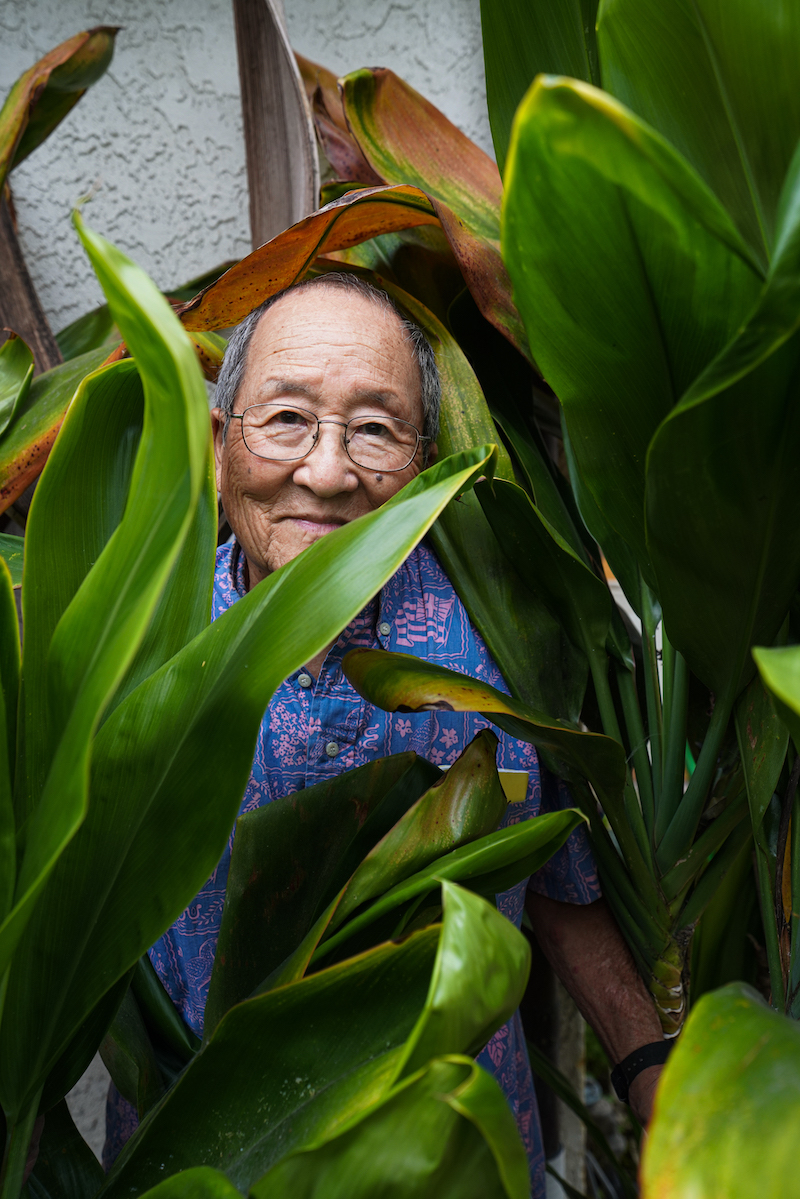
David Okada amongst the Ti leaves in his backyard, Manhattan Beach, CA. (Photo by Shei Marcelline)
He usually sports ripped jeans from gardening wear and tear, but today he’s dressed in a Hawaiian shirt and cargo shorts—proud to give a tour of the tropical 50-by-110-feet jungle that adorns the outside of his home.
Quite energetically, the 5-foot-4 retired toymaker travels around his backyard paradise, pointing out the thriving produce: pineapple guavas, shell ginger, ‘fuyu’ Japanese persimmons, Fují apples, Frangipani, Ti leaves, ‘Lilikoi’ passion fruit—and most abundantly Shiso leaves.
“I'm the King of Shiso,” Okada exclaims, as he grins and points to what is now a third generation of the plant. “When a person goes crazy with shiso. This is what happens.” Okada’s once-single shiso stem, gifted to him by his daughter, has evolved into a bright green sea of shiso tall enough to reach Okada’s waist.
Shiso (Perilla frutescens L.) has two variants, according to the Brazilian Journal of Agriculture, purple shiso and green shiso. Both can successfully germinate between temperature lows of 50 degrees Fahrenheit and highs of 68 degrees Fahrenheit. Pair that with sufficient shading and Southern California can be the ideal place for outdoor growth.
Okada, or rather ‘the Shiso King,’ uses his homegrown shiso often in the kitchen, adding it to popular Japanese cuisine. “I chop it up when I make sushi, or I use it to make rice balls for [my grandson]. It's just a nice fresh flavor and it's not too strong.”
Okada’s knack for horticulture traces back to his earliest memories growing up on the slopes of the Haleakala volcano, in Maui, Hawaii. He learned early in life that abundance and money aren’t synonymous. Before moving to the U.S. mainland, a “primitive” lifestyle was all he knew. Okada fondly recalls the “gentler time”—attending school barefoot or picking flowers before class. No roads, no stoplights, just happiness.
“Gardening reminds me of my childhood—a place where things kept growing,” he says.
He closes his eyes as he recalls learning how to grow produce from his grandmother, a natural gardening connoisseur, who he believes “could grow anything.”
As a young boy, they spent entire afternoons in the garden together. She once told him, “you have to try to grow nice things because things can be very bad”. To this day, Okada lives out her advice, using gardening as a cultural touchstone that anchors him to the lifestyle of generations that came before.
Okada’s grandparents emigrated from Japan to Hawaii in the early 1900s, succeeding generations of poor Japanese farmers, decades before the islands became a U.S. state.
Okada’s last name means ‘upper field’ in Japanese, but he wishes it would translate differently. “In Japan, if you lived in the upper field, you had very barren, rocky soil—so my name is David ‘upper field.’ But really, I wish I was David ‘alluvial soil’,” he jokes.
Despite the translation of his last name, Okada has no problem cultivating fruits and herbs at his Manhattan Beach home. His green thumb harvests a wide variety of produce, tropical mostly, in reminiscence of Hawaii.
Okada once attempted mangoes, but according to his wife, Kathy, it’s a sensitive subject. He didn’t seem to mind.
“If [a plant] dies, that's okay. It doesn't matter. But if you put them in a bigger pot and give them more loving, tender care you could try again and next time have more.”
‘They go together—like love and marriage.’
Padmini Joseph’s La Cañada Flintridge home was once the Sri Lankan community’s link up spot for fresh curry leaves in Los Angeles.
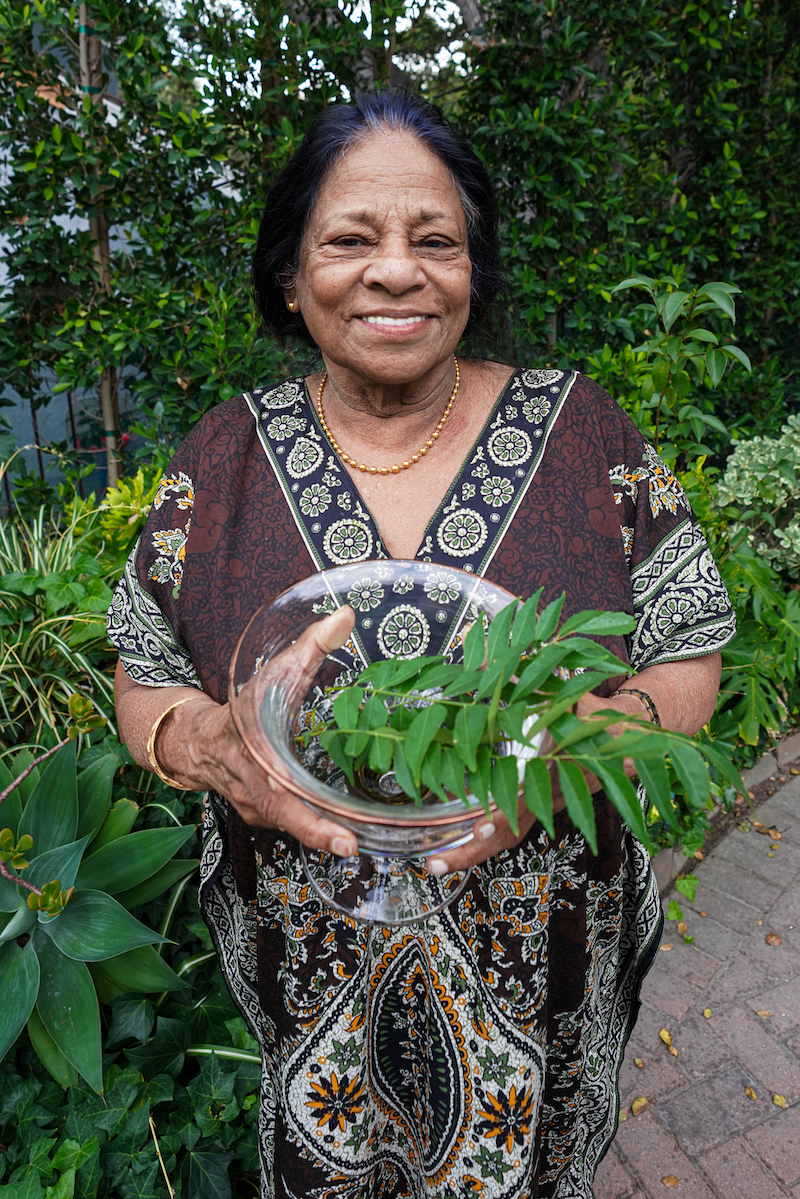
Padmini Joseph holds a bowl of karapincha leaves from her backyard, La Cañada Flintridge, CA. (Photo by Shei Marcelline)
Every weekend people would gather around a tree, planted at the front of her home, with gallon-sized Ziplock bags in hand, ready to pluck sprigs that would sustain them for weeks to follow.
Joseph, now 83-years-old, suspects some may have even come and collected curry leaves while she was at work. “I’m telling you, so many Sri Lankans would quietly come and pluck leaves from my tree. Eventually, I lost the whole plant,” she says smiling.
The curry leaf plant Joseph refers to is commonly known as ‘Karapincha’ in Sri Lankan Sinhalese culture. Having learned her lesson, Joseph jokes, “Now, I’ve replanted two small ones… this time I made sure to grow them in the back.”
Joseph grew up in Borella, Sri Lanka, cooking frequently as a home economics advisor. She made the tough decision to move to California in 1980, due to heightening tensions between Sri Lankan Sinhalese and Tamil ethnic groups. Three years after Joseph’s emigration, the decades-long Sri Lankan Civil War officially began.
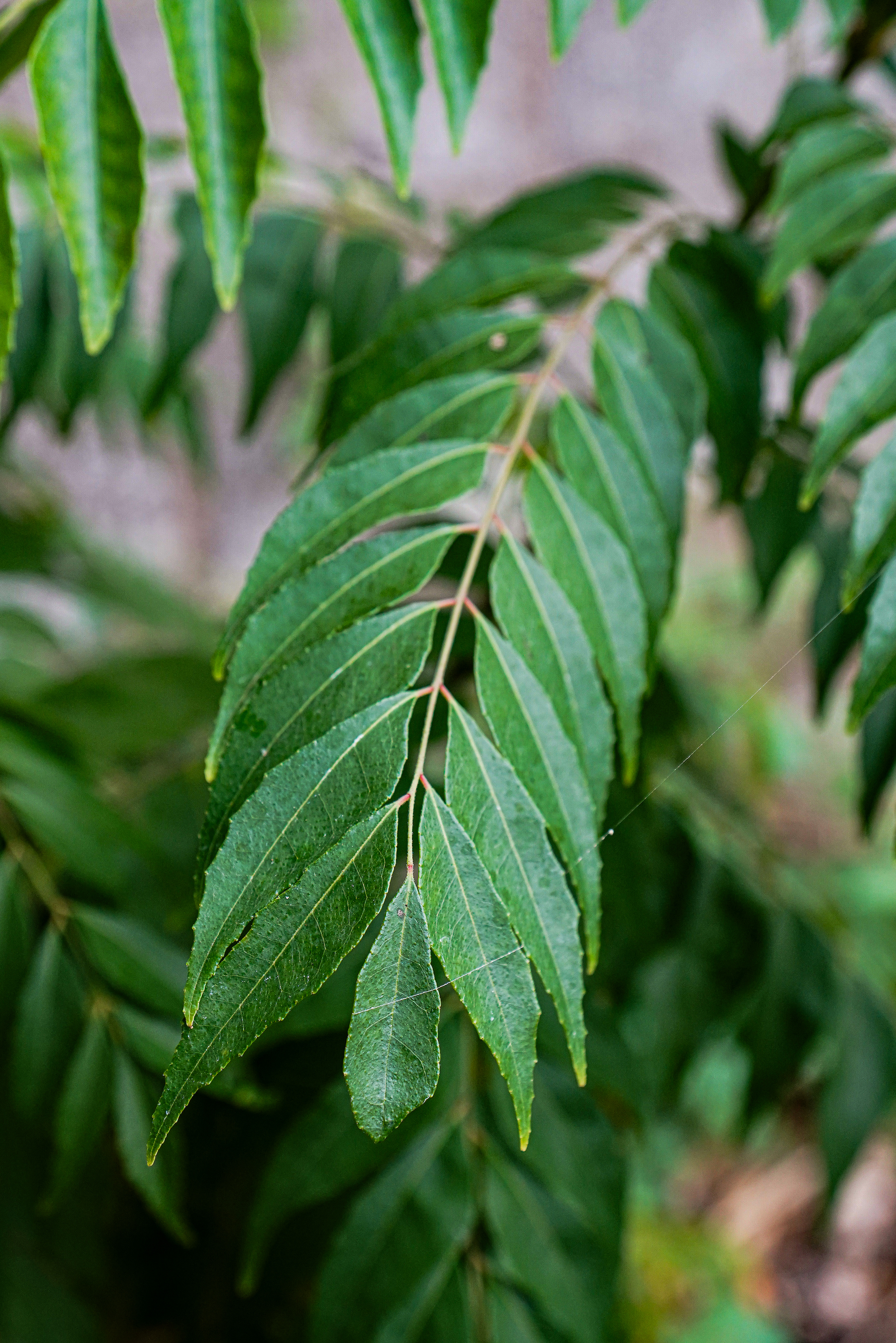
Karapincha leaves in Joseph's backyard, La Cañada Flintridge, CA. (Photo by Shei Marcelline)
Joseph has since gone back to Sri Lanka for visits, but feels more at home now in LA. Her transition to the States was at-first rocky, since Sinhalese is her first language, but once she successfully opened her own Montessori schools, the feelings of independence and opportunity surmounted the fears of a new life.
Moving to the States was also a challenging culinary transition for Joseph. On one hand, she felt it important to cook Sri Lanka cuisine as a way to “stay in touch with her culture.” But on the other hand, sourcing curry leaves, without her own plant, felt like a cumbersome trek. “Karapincha is just taken for granted in Sri Lanka,” Joseph admits, “We either grew it or bought it at the store, but we never had to go multiple places searching for it the way I did here.”
Sri Lankan cook and food blogger, Farwin Simaak defines karapincha’s taste as a mix of anise, citrus and earthy flavors—a flavor profile native and essential to South Asian cuisine. Pair these leaves with a few more simple ingredients, and classic Sri Lankan curries can be achieved in any SoCal kitchen.
“Coconut milk, onions, green chilies, karapincha, a bit of cinnamon and fenugreek,” Joseph says, “when Sri Lankans make white curries, we use the same ingredients over and over. They go together—like love and marriage.”
When Joseph became an LA homeowner in 2000, she knew that planting her own Karapincha tree would be a better solution than making an additional grocery stop at the Indian mart on a weekly basis. She says, “When I pluck [karapincha] straight from the garden and cook it, it tastes different from the store-bought leaves. The smell and taste are both stronger.”
Relying on olfaction alone, Joseph can decipher fresh karapincha leaves from the stale ones, “Karapincha is very aromatic. It has a dark citrus, almost bittersweet smell. If the leaves are old you can tell because the smell is barely noticeable.”
Though Joseph has replanted new karapincha trees to compensate for her loss, the plant itself takes 2-5 years to mature and be ready for cooking. Ironically, Joseph now finds herself in the reverse role, sourcing the leaves from other Sri Lankan homes. “I go to a friend’s house and pluck some from her tree,” she says, “Everyone used to pluck from mine and now I get to pluck from theirs... it’s a nice exchange within the community.”
‘One drop at a time’
Just north of LA County, 63-year-old Jesús Tovar sits in his Bakersfield home, breaking a slight sweat on a 106 degree afternoon. But oddly enough, he isn’t sweating because of the weather.
In fact, Tovar’s fan is operating at full speed. The only thing unusual about this Sunday scene is the mason jar full of bright red salsa he’s gripping close to him, as if it were his cell phone awaiting an important call.

Jesús Tovar holds a bowl of Thai chilies in front of his home, Bakersfield, CA. (Photo by Shei Marcelline)
The sweat begins to make sense. “Sometimes, I go through one of these in a day,” he says looking at the jar. “The heat is intense, but don’t worry, it doesn’t last that long.”
The heat Tovar’s referring to comes from his own salsa recipe, where he opts for Thai chilies instead of the usual jalapeño. “When I eat jalapeños, they mess up my stomach for the rest of the day… Thai chilies don’t have that same effect.”
Measured by Scoville Heat Units (SHU), jalapeños typically range from 2,000 to 8,500 SHU, while Thai chilies range from 50,000 to 100,000 SHU. Depending on a person’s spice tolerance, jalapeños might pack enough punch, but in order to attain Thai chili level status, Tovar recommends trying them in salsa and working your way up “one drop at a time.”
Tovar followed this same principle, building up an impeccable spice tolerance throughout his lifetime. He’s even tried the notorious ghost pepper and the Trinidad Scorpion—spice challenges not suited for most. But for Tovar, spice isn't just a challenge. It was once a flavor necessity.
Born in Weslaco, Texas, right on the Texas-Mexico border, Tovar grew up in a Mexican immigrant household with six siblings and limited means. “[My family] was poor, so meals were made up of rice, beans, potatoes and a sack of flour for tortillas. We only had meat—hamburger meat—once a week on payday. That was it. I would add spice to my food for more flavor so things would taste better. I guess that part hasn’t really changed.”
Spice played an essential role in Tovar's childhood taste palette and became a staple in his adulthood. Wherever Tovar travels, the jar is his constant companion. He purchases several pounds of Thai chilies every time he goes to the local swap meet, ensuring he won't run out. But before making the actual purchase, Tovar must always bite into a green chili from the batch on display, making sure its heat levels are just right.
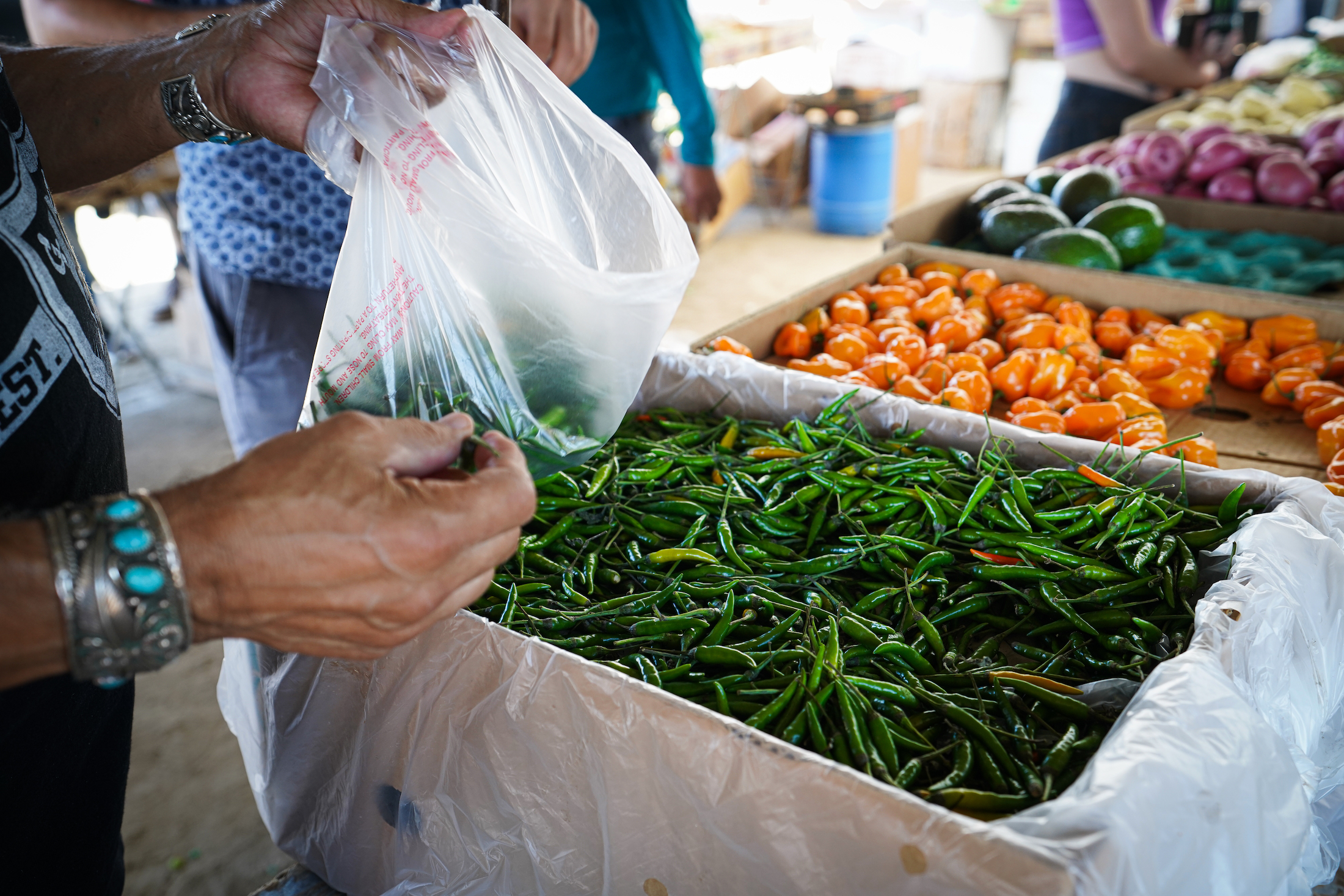
Green Thai chilies at the Kern County swap meet. (Photo by Shei Marcelline)
"The more ripe they are, the hotter they are," he says. "If they pick 'em too soon, they're not hot enough. For about two pounds of fresh Thai chilies, Tovar spends around six dollars.
Tovar’s late wife, Priscilla, along with the rest of his family, would poke fun at his Thai chili addiction. “My wife was from New Mexico. She was a Native American,” says Tovar, “She cooked New Mexico style. They prefer to use red chili peppers, not the green ones like in Mexican cooking.”
This month's visit to the swap meet was a larger-than-usual Thai chili haul—chili season is approaching its end. As the weather cools down, Tovar preps his own method to survive the chili-less winter, similar to the way a bear prepares for hibernation. He says, "Each time I go, I make sure to get enough chilies where I can freeze some. This way, they're always ready in case I run out. I'm not sure what I'd do if that happened... and I don't want to find out."
